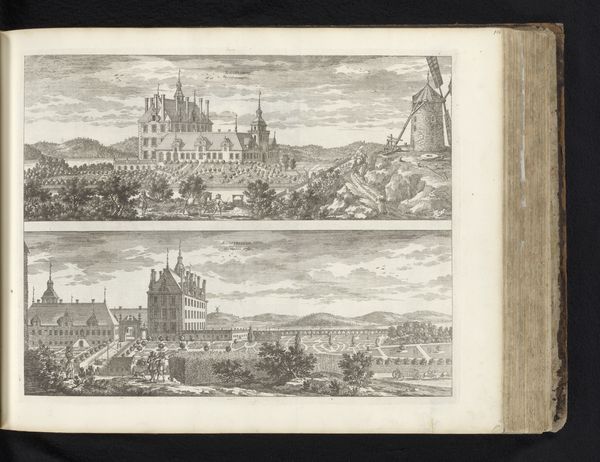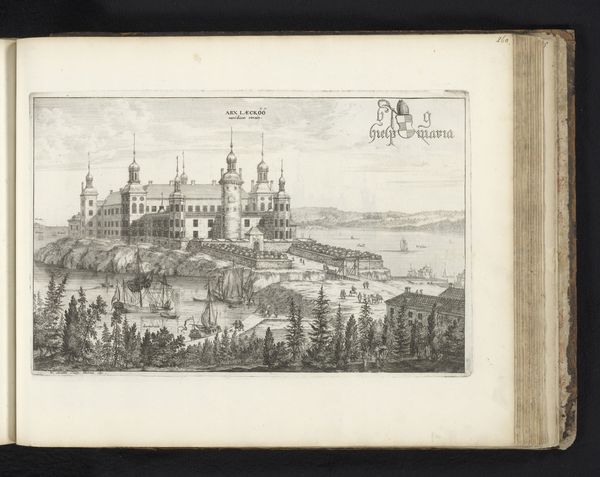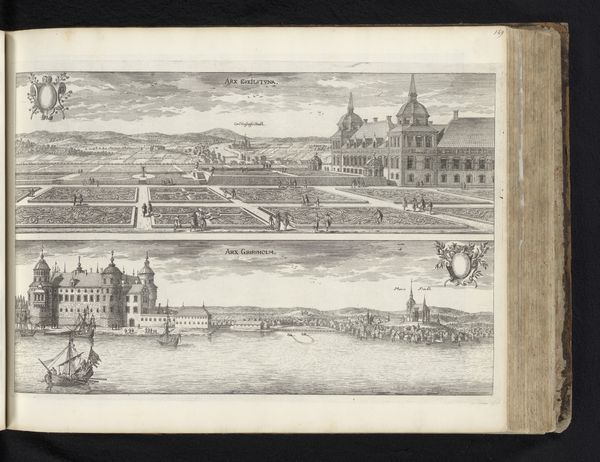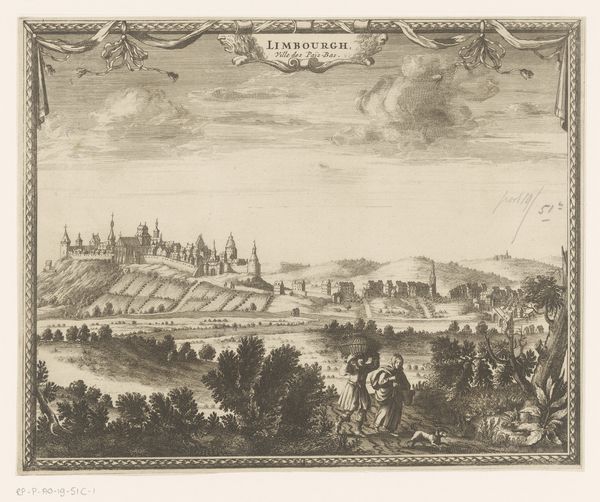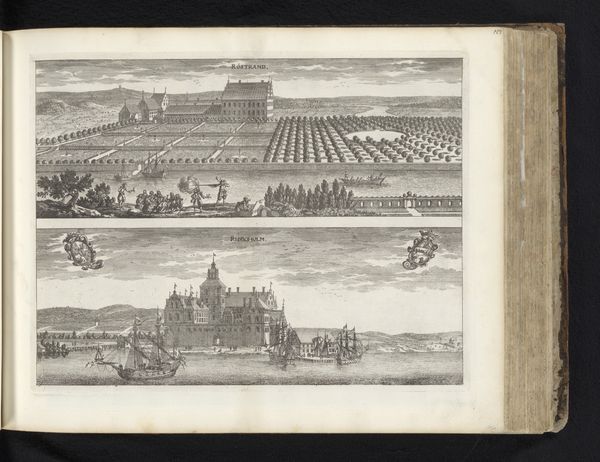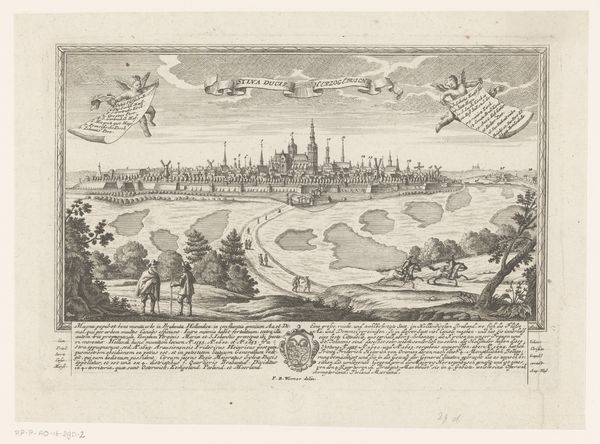
drawing, print, pen, engraving
#
drawing
#
aged paper
#
toned paper
#
dutch-golden-age
#
mechanical pen drawing
# print
#
old engraving style
#
sketch book
#
landscape
#
perspective
#
personal sketchbook
#
pen-ink sketch
#
pen and pencil
#
line
#
pen
#
cityscape
#
storyboard and sketchbook work
#
engraving
#
pencil art
Dimensions: height 281 mm, width 342 mm
Copyright: Rijks Museum: Open Domain
Curator: This meticulous engraving, created in 1697 by Willem Swidde, presents us with "Gezicht op slot Gräfsnäs en slot Nääs," or, "View of the Castles Gräfsnäs and Nääs." The print is currently held at the Rijksmuseum. Editor: My first impression is one of intricate precision. The buildings have a jewel-like quality, nestled neatly into the landscape on what looks like aged paper. There’s a real sense of crafted order in its composition. Curator: The drawing’s visual structure divides into two distinct landscape portrayals, which emphasizes the presence of the castles, but looking closer, I wonder about the economy of engraving in the Dutch Golden Age. How did this process reflect and perhaps reinforce class structures? Editor: Interesting! Looking at it formally, Swidde has expertly utilized line to suggest depth and texture, creating a very engaging perspective that leads the eye to the vanishing point behind the castles. See how light catches those spires and the details in the masonry? Curator: Exactly, yet consider how the production and consumption of such imagery also functioned within networks of power. Was this accessible for mass production and viewership, or limited only to a specific audience? The social context informs the reading. Editor: Absolutely, I’m interested in what these details might convey. We can decode it using iconographic semiotics—are there emblems within that tell of lineage, of ownership? Even those strolling figures become like tiny indices pointing back at social hierarchy. Curator: These engravings were made to be distributed widely, so maybe this suggests an element of social propaganda to reinforce and project ideas of class. Consider also the availability of materials: what type of labor underpinned that kind of production? Editor: The sheer control with those clean, even lines shows that the artist understands light, volume, the very essence of form—perhaps pointing at their dedication of labor that helped shape such a print. Curator: And this engraving provides such fascinating insight into that specific time and society that prized these estates. I keep asking what material and symbolic worth was put on to the landscapes like these? Editor: Well, by studying the forms within these landscape images we see the hand of Swidde directing how we look at it. These aren’t just buildings—they are aesthetic statements, a kind of constructed argument through careful, considered shapes.
Comments
No comments
Be the first to comment and join the conversation on the ultimate creative platform.

